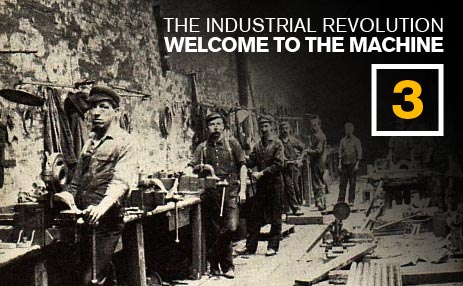Latest
-
Objections to the Christian Faith from the Unchurched and De-Churched
 Tue Dec 02, 2014
Tue Dec 02, 2014
by Resurgence -
Craig Groeschel: We Innovate for Jesus
 Tue Oct 14, 2014
Tue Oct 14, 2014
by Resurgence -
Mark Driscoll: Revelation
 Tue Oct 07, 2014
Tue Oct 07, 2014
by Resurgence -
RESURGENCE LEADERSHIP #034: JOHN PIPER, WHY I TRUST THE SCRIPTURES, PART 2
 Tue Sep 30, 2014
Tue Sep 30, 2014
by Resurgence -
Resurgence Leadership #033: John Piper, Why I Trust the Scriptures, Part 1
 Tue Sep 23, 2014
Tue Sep 23, 2014
by Resurgence

Archives
The Industrial Revolution: Welcome to the Machine, Part 3
 In the 18th Century, the Presbyterian, Congregational, and Anglican Churches were the predominant Christian movements in America. By the end of the Industrial Revolution, two small and nearly unheard of groups, the Baptists and the Methodists, would dominate the scene. This new time called for fast expansion, movement as quick as the railroad, and methods that were pragmatic structures. As the Industrial Age threw the rate of change into high gear and pioneering lands were formed, those groups who incarnated to the change won the day.
In the 18th Century, the Presbyterian, Congregational, and Anglican Churches were the predominant Christian movements in America. By the end of the Industrial Revolution, two small and nearly unheard of groups, the Baptists and the Methodists, would dominate the scene. This new time called for fast expansion, movement as quick as the railroad, and methods that were pragmatic structures. As the Industrial Age threw the rate of change into high gear and pioneering lands were formed, those groups who incarnated to the change won the day.
Church Factory
On the denominational level the church practiced what companies and factories knew as a "brand." Denominations were marked by consistency. It was likely that someone who went to first denomination church of Hartford could walk in to Central Denominational Church of Chicago and expect, likely, the same pieces. This varied only slightly from denomination to denomination. This standardization had existed before the Industrial Revolution, but it became clearer, easier, and more systematized. Manuals and seminary training allowed for near identical replication. That replication included minutia, belief, liturgy, and ecclesiology. It allowed churches to be identical, training to produce for those denominations individuals who were expected to know what others knew in that denomination.
The Suburban Church
The great societal shift during the Industrial Revolution would continue. The Agrarian world would become a wasteland. People would leave it in droves to hover around the new center of sustenance—the factory. They would get there in the symbol of the age—the automobile. And they would live in the most standardized communities that we had ever known—the suburbs. The church would find its place there and, just as in the Industrial Age, would hit its stride between the 1940s and 1960s. The church, like other institutions, but arguably more so, always drives from the rearview mirror. It is always somewhat reactionary, always somewhat imitative when it comes to culture. I have often joked that being called a futurist in the church was very easy—just look at what was happening ten years ago and figure out how the church would do it. To be continued.